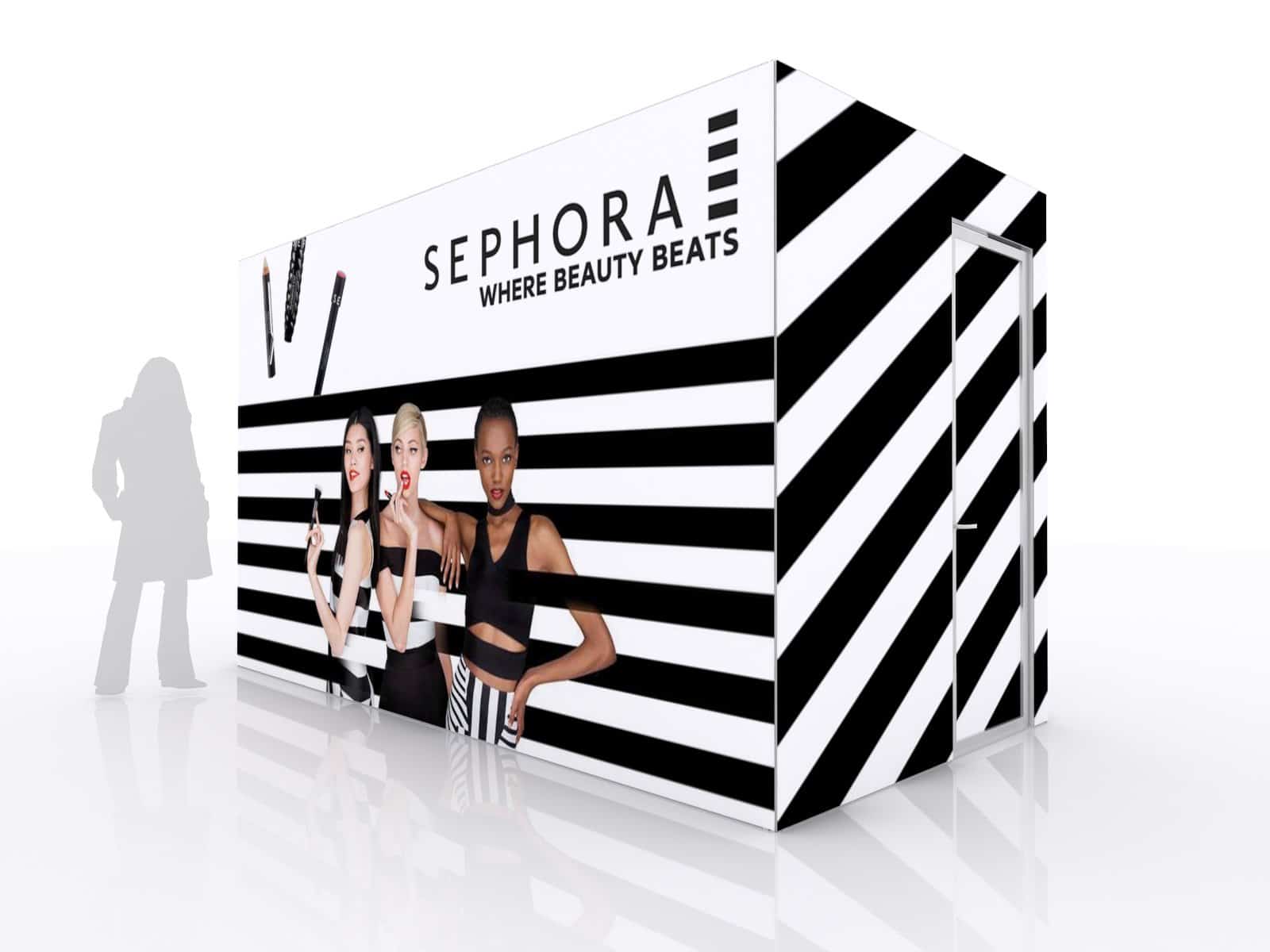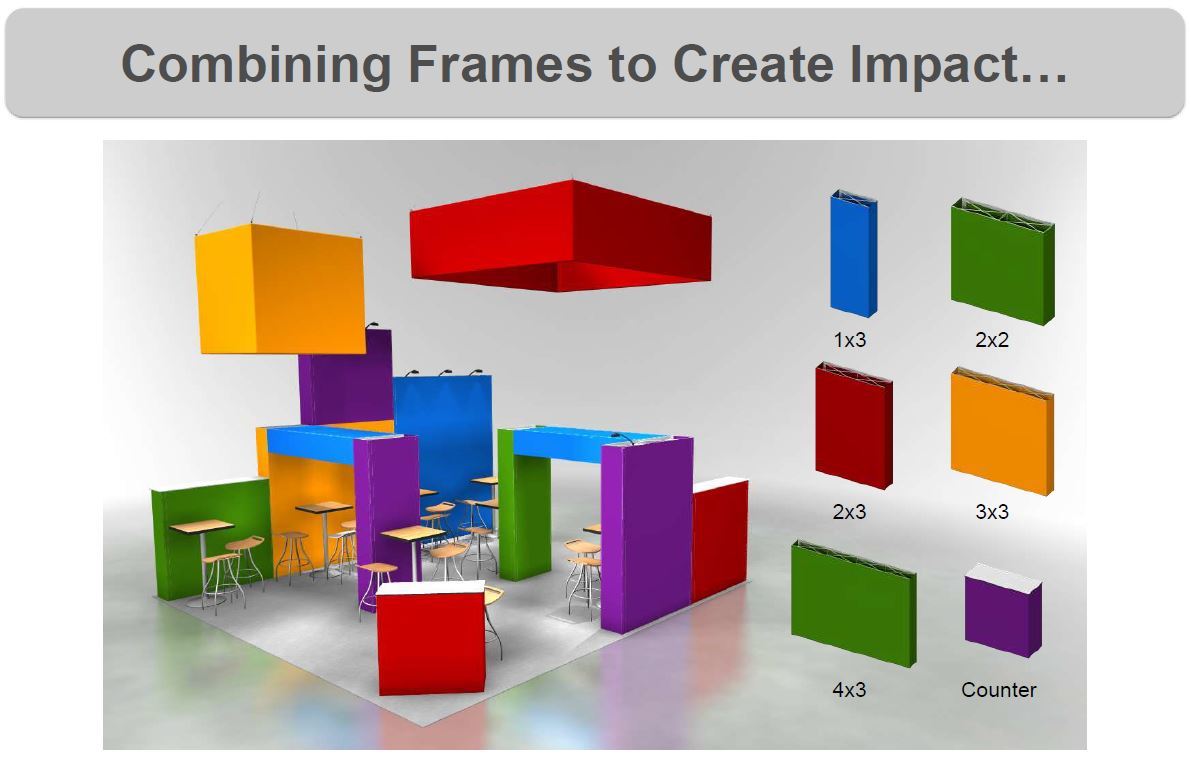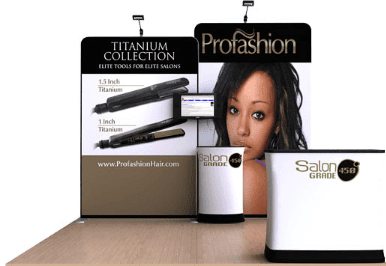Trade Show Display: Purpose, Styles & Selection
Custom Trade Show Booth Designs
Trade Show Displays are tools for showing your company brand and advertising your products. They are used in trade shows, conventions, and business conferences; these gatherings occur in many different locations all across the globe.
Some trade shows are huge, with thousands of exhibitors and tens of thousands of attendees and visitors wandering the aisles, with the convention lasting for many days. Some chamber of commerce conferences can be limited to 10 exhibits and only last for a few hours.
Across the range of these advertising requirements, “trade show displays” is the generic term for the structures used for displaying the vendor’s company name, logo, tag line, and various product or service offering information.
Given the wide range of places where these display stands are used and the many years they have been successfully used to promote business and products, it makes sense that there are lots of different sizes, styles, and construction methods used to create them. These different exhibition stands can also be customized, and are often categorized or grouped in different ways.
Trade Show Display Size
One common discriminator is the required size of the trade show display; this can range from the smallest unit – a tabletop display – meaning the exhibitor has a table that they stand behind, to exhibition displays that take up hundreds of square feet of booth space.
For the biggest shows and product types, such as automobiles, trucks, and airplanes, one can easily imagine that the space required for actually demonstrating a product is enormous!
In the United States, trade show booth sizes are established in 100 sq. ft. steps, with the smallest normal space being a 10×10. Inline booths are arranged side by side, back to back in a line, and range in size from 10×10, 10×20, 10×30, etc.
Trade shows also offer island spaces, normally at least 20×20 spaces, and are called islands because aisles surround them on all sides. Thus, the trade show display used in an inline booth has a backside that will never be seen by visitors, while the display stand used in an island booth space will be seen on all sides and must be designed to take advantage of that factor.
Magellan Portable Hybrid Display with Tension Fabric Graphics
Trade Show Display Materials
Over the years, trade show displays have been built with wood and metal structural components; the modern trend is to use lightweight structures, primarily metal, that pack up quickly, ship inexpensively, and are easy to set up and takedown.
This isn’t as important for custom exhibit stands intended for use in very large shows, but the vast majority of exhibitors are small and medium-sized businesses with medium-sized products or services – this majority focuses on display stand portability and ease of use.
Other advantageous design factors for the typical exhibitor include the capability to easily swap out graphics. The same display stand can be used at different shows for different markets and products.
Trade Show Display Style and Function
Within the subset of trade show displays designed to be lightweight and portable, there are still thousands of options regarding look and style, and function. Construction alternatives include pop up frames, a range of display stands build with metal frames, metal tubes and extrusions, and also truss displays, typically made from aluminum or steel.
Truss displays are the heaviest of the so-called portable trade show booths but offer structures that can support lots of product, as well as the advantage of being a “tinker-toy” tool, meaning that you can build one shape today and a completely different shape tomorrow.
The newest truss designs use space-age composite truss, developed from the aerospace industry. They offer most of the advantages and design features of truss, combined with a much lighter weight, meaning lower shipping costs, lower drayage fees, and shorter and easier setup and dismantle times.
SEG Popup Modular Display Example
Historically, pop up frames are the lightest and least expensive full-size trade show displays and are made from lightweight aluminum tubes and extrusions, designed to expand and collapse using accordion-like frames.
These frames are used to construct pop up displays with panels of fabric or mural graphics that are hung from the top of the frame. Newer designs of these pop up frames use dye-sub printed fabric graphics instead of a series of heavier “carpet panels” or laminated flexible graphic panels. This fabric is stretched over the front of the pop up display frame and attached either by Velcro fasteners or silicone edged fabric graphics (SEG) pushed into grooves in the frame.
The Velcro-attached fabric graphics normally are left in place on the frame even when folded up for shipping, while the SEG graphics are removed and folded up.
These more modern designs weigh less than traditional pop ups and take less time to set up and take down. Recent developments in the pop up display world have added backlighting (first with T5 fluorescent bulbs, and now LEDs). This serves to create eye-catching graphic displays that are still lightweight and simple to set up.
Moreover, manufacturers have re-engineered the frames and added connectors, so the best of these SEG POPUP displays can be connected and even stacked, to build very attractive large island displays that still retain all the desirable characteristics of the original pop up – lightweight, portable, simple to use.
Trade Show Display Shapes and Graphics
Lightweight molded aluminum tubes are appearing in many different shapes; typically, these tube frames have a bungee cord inside the tube, helping to keep the frame sections together. The graphics are dye-sub fabric, sewn in a “pillowcase” shape so that the pillowcase is slipped over the tube frame and zipped shut.
These tube frames and pillowcase graphics are very lightweight and easy to set up. They are available in different shapes, and many frames can be hooked together to create a variety of shapes and configurations, making these tube frames a useful modular design tool.
Tube frame displays with pillowcase dye-sub graphics
Another fabric display uses extruded aluminum frames in a wide variety of shapes. These exhibit stands are sometimes called hybrid displays. They can employ fabric graphics that attach with Velcro. The latest hybrid display technology also uses SEG graphics; the extrusions are made into many different curved and flat shapes, creating trade show displays with an enormous range of looks and styles.
The extruded metal forms are designed to quickly slip together; most extrusions use a hex key or screwdriver to simply lock the extrusions together. The latest technology incorporates a knob on the extrusion that is simply tightened by hand so that absolutely no tools at all are required for setup or disassembly of these “best of breed” new generation fabric trade show displays.
The venerable “panel display” used to mean Velcro receptive fabric, glued to wooden frames, built into different shapes and styles. These panel displays have grown up some and are still available, but there is a new kid on the block.
Gravitee Display

The Gravitee display system uses extrusion frames with dye-sub graphics; the panels normally ship fully assembled, so setup and dismantle are very quick. The Gravitee is modular; the panels can be combined into many different shapes, and it’s also simple to replace the graphics.
Almost all of the different exhibition stand construction methods mentioned use designs that allow exhibit booths to be linked together so that the 10×10 can be extended to 10×20, 10×30, etc.
The best trade show display designs also offer the capability for double-sided graphics, so that the front-facing 10×10 stand can not only be made into a longer 10×20 display but can also become a double-sided display or even part of a large tower, advertising company branding, products, and services in a medium or large-sized island configuration.
Trade Show Booth Design
There are many choices to be made while designing an exhibit booth, but the process must start with a clear understanding of requirements. The prospective exhibitor needs to make sure they understand the sizes of their anticipated booth spaces, whether they need to be concerned with inline or also potential island configurations, and whether their graphics need to be changed frequently or not.
A factor frequently missed by new shoppers in the exhibit world is that the recurring cost of shows can quickly exceed the purchase price of even the most expensive trade show booth. Exhibitors should then consider the importance or trade-off value between price, weight, and setup/disassembly time.
Trade Show Booth Shipping Costs
If the booth is shipped frequently, then shipping cost and drayage fees at the show will add up quickly. (Don’t take my word for this; check it out!) Similarly, if the booth will be set up/dismantled frequently by hired contractors, then the ease and speed of setup can help reduce the cost of those expensive laborers.
Most reputable trade show booth suppliers offer consulting services to help clients understand the trade-offs. So long as time is taken to understand both the requirements and the choices, the results should be versatile, great looking trade show displays that will last for years – stands that are truly investments with good ROI, and not just poorly planned expenses.
If you’re looking for some help with your next trade show display, don’t hesitate to contact American Image Displays – we’re happy to help you sort through all of the many choices!
Trade Show Display FAQ
Have more questions? Check out our brief FAQ below, and let us know if you find what you are looking for!
What is the purpose of a trade show?
Trade shows are held and organized by different industries as a way for companies to display, demonstrate, and discuss their products and what their company has to offer. Many of the major trade show events occur in convention centers in larger cities and often last for several days.
Your trade show display purpose should reflect what it is you want to accomplish by exhibiting at the trade show. The display is what makes you stand out from the competition so you can meet your objectives.
What do you want to accomplish through trade show participation?
Since the trade show is a valuable opportunity to showcase and highlight your brand, you want to set goals for boosting orders, generating leads, and increasing revenue. You also want to leave an impression on each attendee that visits your booth. You may also have a new product you are eager to demonstrate and highlight as well.
What are your trade show display options?
We have discussed several different trade show display options for you to consider for your next exhibition. Pop up displays, tension fabric displays, custom modular displays, truss systems, and banner stand walls are all great choices and can grab the attention of attendees.
What do you need for a trade show?
When preparing for a trade show, you should develop a plan and make sure you have all the right signage in place, presentation media, promotional items, literature, business cards, power strips and extension cords, organizers, and all the other accessories and equipment you need.
How do you prepare for a trade show event?
Always plan far in advance of any trade show. You want to begin by preparing the sales and teams, market your brand on social media, provide giveaways, and design a display booth that sets out to accomplish your purpose and goal. You want to stand out from the competition, be seen by attendees, and generate leads that you can then follow up on.
This article was originally published in 2009, and updated in May 2023.




